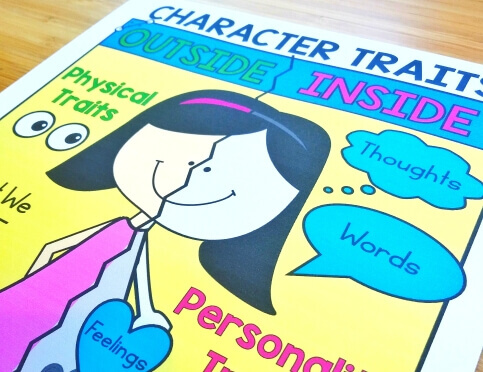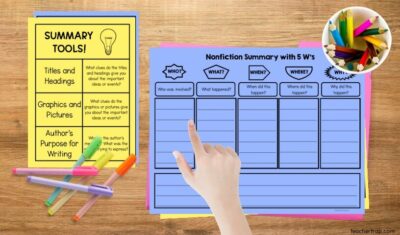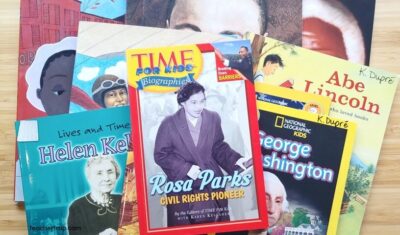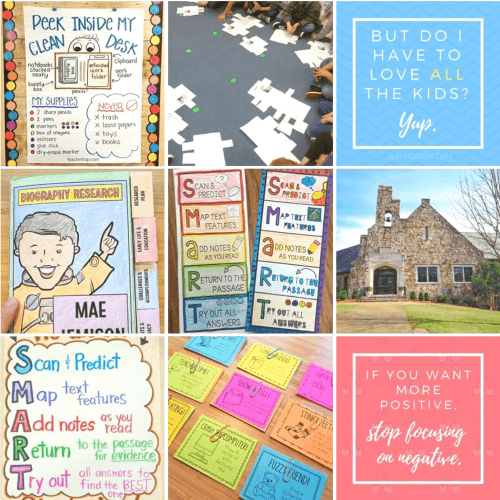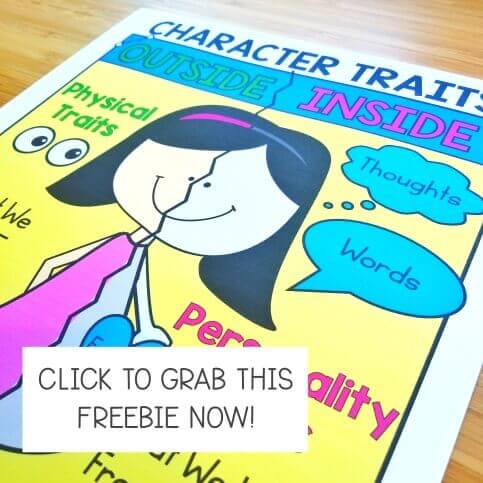Struggling with how to teach summarizing? You’re not alone! Help students master the fine art of summary with graphic organizers for nonfiction and fiction, anchor charts for teaching summarizing, and engaging activities to practice this challenging skill!
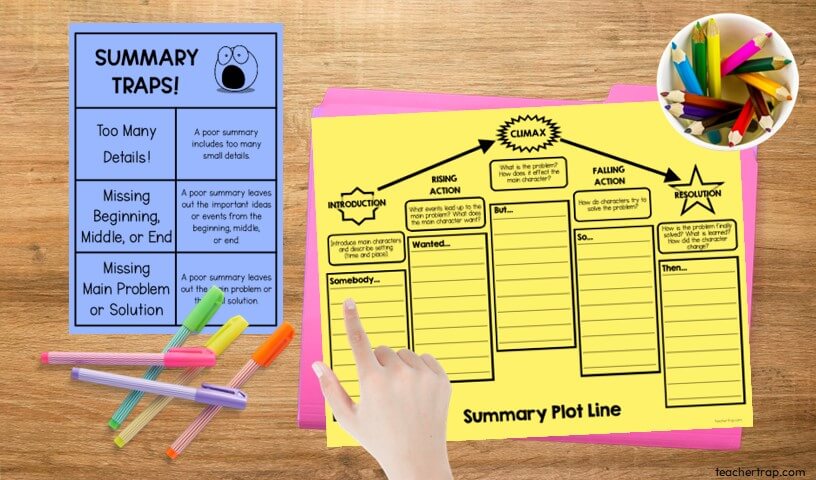
How to Teach Summarizing in Elementary Grades
Summarizing is a tricky skill for many students and knowing how to teach summarizing can be even harder! Students must learn to identify key ideas or events and concisely retell them without including smaller details. Luckily, there are lots of ways to help students find success with summary!
- Start small: Begin with short texts and familiar stories to help students get a feel for summarizing. If students are overwhelmed by the length, concepts, or vocabulary in a text, teaching summary is almost impossible!
- Provide lots of practice: Summarizing isn’t taught in one lesson. This skill develops over time with lots of opportunities for trial and reflection.
- Use graphic organizers: Visuals help students organize information and understand concepts. With summary, these visuals are essential!
- Teach the tools and traps: There are simple clues in every text that can aid students in identifying main ideas for a summary, along with predictable pitfalls that can be avoided. (More on this below!)
- Emphasize text structure: Fiction and nonfiction texts have predictable structures that can help students identify key ideas or events. Teach those structures! (More below!)
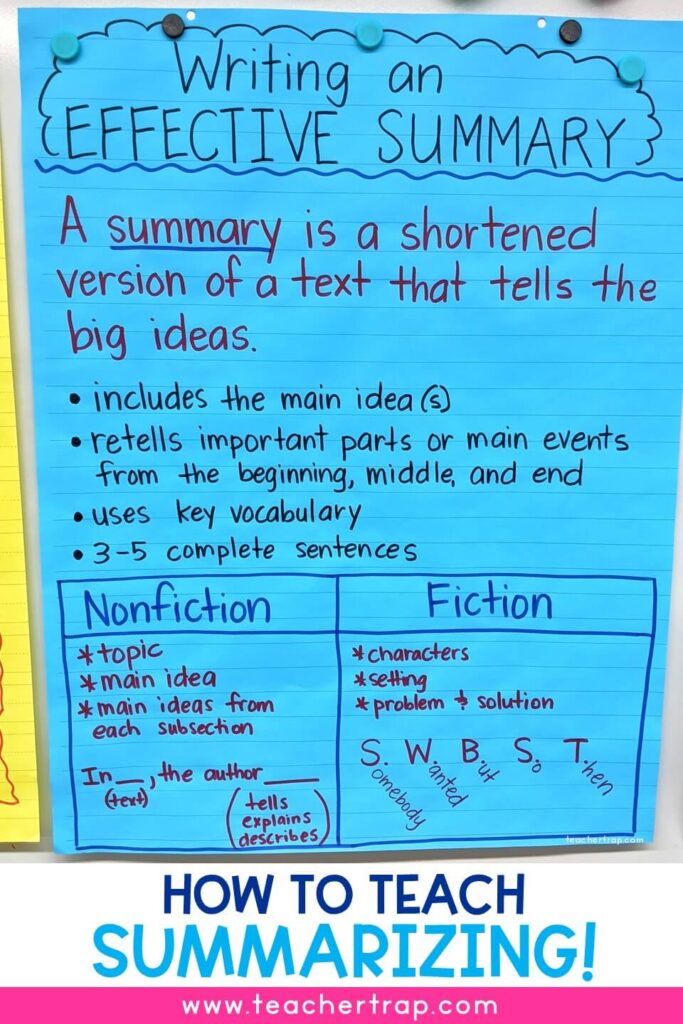
Summarizing Nonfiction with Graphic Organizers
Let’s start with how to teach summarizing of nonfiction texts. Many students can identify the topic of a text, but struggle to craft a more complete nonfiction summary. In my Summarizing Made Easy Pack, I start with the traditional “5 Finger Summary” (where students ask who, what, when, where, and why) to identify key elements of the text. But the 5 W’s are just the beginning! For more complex texts, or those with certain text structures, students must dig a little deeper.
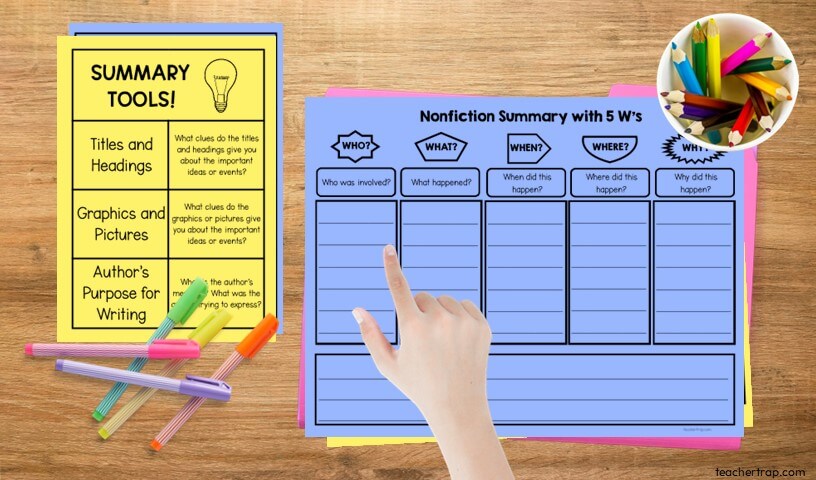
- Start with author’s purpose: With any text, students should always consider the purpose of the writing. Inform? Persuade? Entertain? If the purpose is to inform, what does the author want us to understand? If the purpose is to persuade, what does the author want us to think or do? Being able to answer these questions helps students craft a better summary.
- Identify the text structure: Even younger students can see the difference between a text written in chronological order retelling events or steps, and a text written to share all the things about one topic. Similar to author’s purpose, students must ask, “What was the author’s goal?” If the text has a “Cause & Effect” structure or is comparing two things, that should be clear in a nonfiction summary.
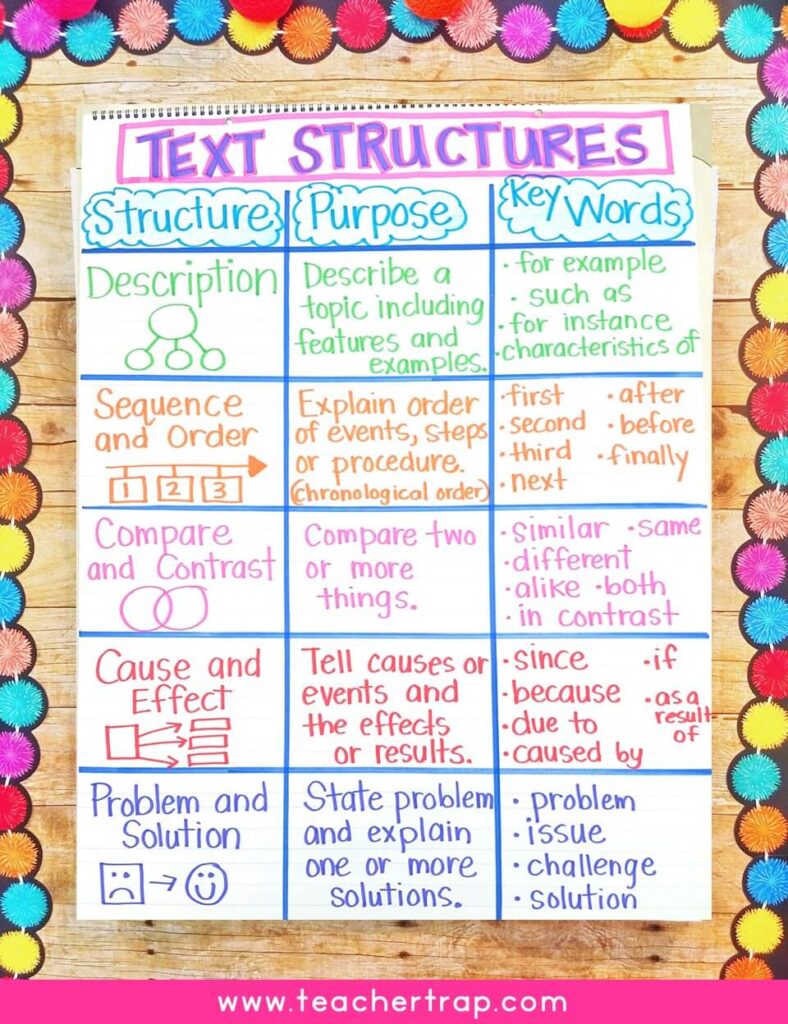
- Include the beginning, middle, and end: Especially in a testing situation, identifying the best nonfiction summary often comes down to recognizing the key ideas from the beginning, middle, and end of the text. The correct answer choice will have all three parts, while incorrect answers will be missing one of the three.
- Determine the main ideas: With nonfiction summary, students must recognize the main ideas in the main sections of the text in order to craft a well-written summary. Be sure to practice identifying main ideas and using these main ideas to write a summary.
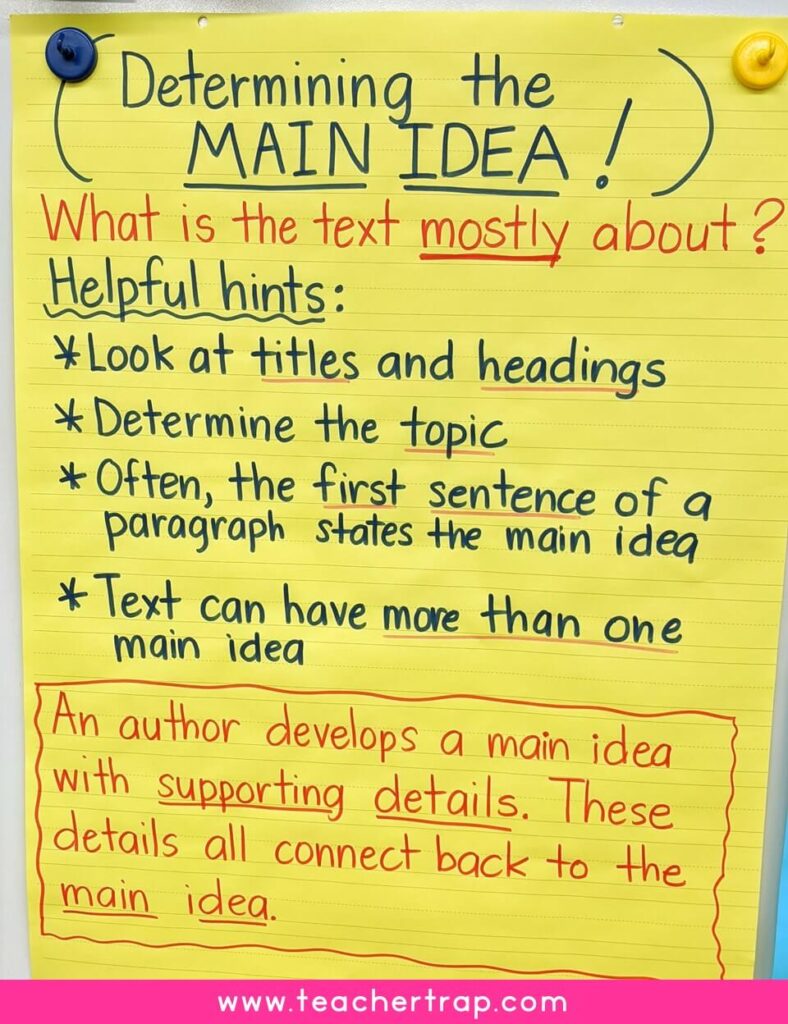
How to Teach Summarizing of Fiction Texts
When summarizing fiction texts, students must recognize key story elements and the main events of the plot without getting bogged down by all the extra details.
- Start with familiar stories: To help students understand what fiction summarizing is all about, begin with simple stories that are familiar to all students. I like to use short picture books of classic tales like “The Three Little Pigs” or “Little Red Riding Hood,” but any familiar book will do.
- Retell first, then shorten: Have students retell a familiar story or read-aloud and include all the events and details they can remember. Next, ask them to retell the story, but this time, only include the most important events. As a class, discuss what events or details are most important.
- Use nonexamples: One of my most powerful tips for teaching summary is to use BAD examples. When you offer up two summaries, one missing the problem or solution from the story, students quickly catch on to what makes a good summary (and what doesn’t). After reading a book to the class, I like to give a quick summary and have students show a thumbs up or thumbs down before discussing their rating.
- Teach fiction story structure: When students understand the structure of fiction, they can easily identify the key parts. The Summarizing Made Easy Pack includes graphic organizers and booklets that help students map out the elements of story and plot using the “SWBST Model” (Somebody, Wanted, But, So, Then) and the Story Plot Line Model.

How to Teach Summarizing: Tools and Traps
When thinking about how to teach summarizing, it’s helpful to introduce these helpful clues along with summary problems to avoid. The list of “Tools” and “Traps” can be especially helpful for reading test prep since students are faced with choosing from multiple summaries and must select the BEST one. (In the Summarizing Made Easy Pack, you’ll find handy “Tools and Traps” reference sheets for students and tips for teaching.)
Summarizing TOOLS: When crafting a summary, paying attention to these features of text can help students stay on track!
- Titles and Headings
- Graphic Features
- Author’s Purpose
Summarizing TRAPS: A poor summary likely has one of the issues below! Teach students to check for these problems when writing summaries or choosing answers on a test.
- Too many details
- Missing beginning, middle, or end
- Missing main problem or solution
How to Teach Summarizing With Fun Activities
Learning to summarize can be fun! Practice identifying main ideas and forming summaries by using these engaging activities with familiar texts and even movies. Great for reading test prep!
- Top Story: Have students pretend they are news reporters giving a brief synopsis of events from a fiction or nonfiction text. Grab a mike! You’re on the air!
- Movie Trailer: Best for fiction but can work with chronological nonfiction. Retell a favorite film in 3 – 5 sentences including the important events from the beginning, middle, and end. Of course, this trailer will include spoilers!
- 3 Scene Sketch: Students must retell a story using concise sketches that capture the main events or big ideas. Give students a piece of paper with three boxes in a row or give each group three pieces of paper for larger sketching.
- Jigsaw Summaries: Break the class into groups and assign each group one part or section of a larger text, asking them to determine the key events or main idea. With fiction, you might create 6 small groups, assigning two groups “beginning,” two groups “middle,” and two groups “ending.” For nonfiction, you can assign each group a different paragraph or section.
For more ready-to-go tips and tools for how to teach summarizing, you can check out the Summarizing Made Easy Pack! Every student can find success with this tricky skill!
I’d love to hear your tips on how to teach summarizing in the comments. What are your favorite strategies, books, and activities?






